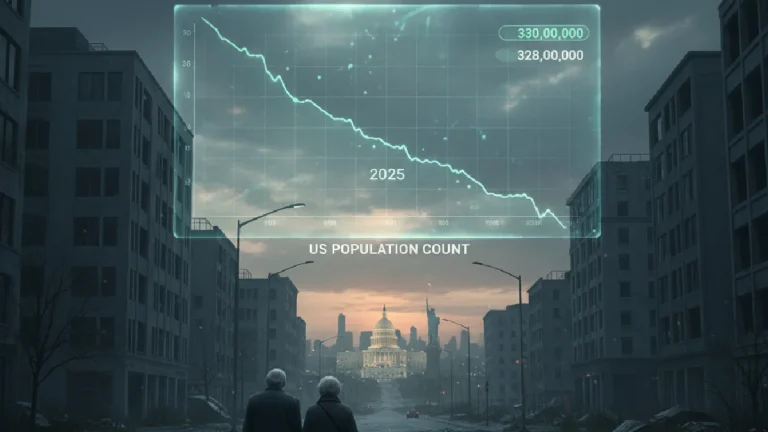The United States is on the cusp of its first-ever population decline in 2025, driven by a sharp drop in net immigration that outweighs natural growth, according to new Census Bureau projections. The data, released September 5, 2025, signals profound implications for urban economies, housing markets, and electoral maps, raising concerns among policymakers and economists.
A Demographic Turning Point
The Census Bureau estimates the U.S. population, currently at 341 million, could shrink by 0.1% in 2025, a historic shift driven by declining immigration and low birth rates. Net immigration, defined as arrivals minus departures, fell to 1.2 million in 2024, down from 2.7 million in 2016, due to stricter policies and global economic challenges. Meanwhile, natural growth—births minus deaths—has slowed to 500,000 annually, as deaths rise with an aging population.
“The math is simple: immigration is no longer offsetting low birth rates,” said demographer Derek Thompson in a September 2 X post. “This decline was expected decades from now, not 2025.” The data marks a reversal from decades of steady growth, with the last near-decline during the 1918 flu pandemic.
Urban Economies at Risk
Urban centers like New York, Chicago, and Los Angeles face significant challenges as population stagnation threatens economic vitality. “Cities rely on population growth to sustain tax bases and labor markets,” said economist Sarah Kim of the Urban Institute. “A decline could strain public services and reduce consumer spending.” Retail and service sectors, already hit by recent job losses, could see further contraction, with 7.2 million job vacancies reported in July 2025.
Housing markets are also feeling the impact. Declining demand in urban areas has slowed construction, with new home starts down 8% in 2024, per the National Association of Home Builders. “Fewer people means less need for housing, especially in high-cost cities,” said real estate analyst Priya Chacko. Conversely, some rural areas may see stabilized property values as urban exodus slows.
Electoral Map Shifts
The population decline could reshape political landscapes, particularly for the 2030 Census reapportionment. States like California and New York, reliant on immigration, may lose congressional seats, while Sun Belt states with higher birth rates, like Texas, could gain influence. “This shift strengthens Republican-leaning states in the electoral college,” said political analyst Mark Sullivan. Recent redistricting in Texas and Missouri, expanding GOP-friendly seats, underscores this trend.
Policy Responses and Public Sentiment
Lawmakers are divided on solutions. Some, like Senator Elizabeth Warren, advocate for immigration reform to boost population growth. “We need policies that welcome legal immigrants to sustain our economy,” Warren said at a September 6 press conference. Others, including Trump administration officials, argue for prioritizing domestic workforce development, citing recent immigration enforcement actions.
Public sentiment on X reflects the divide. “Immigration built America’s growth. Cutting it is cutting our future,” posted @PolicyWatcher2025. Meanwhile, @AmericaFirstNow countered, “We don’t need more immigration to thrive—focus on American jobs.” The debate underscores the challenge of balancing economic needs with political realities.
Looking Ahead
As the U.S. braces for a potential population decline, experts warn of long-term consequences. “A shrinking population could weaken global competitiveness,” said Kim, pointing to Japan’s struggles with an aging, declining population. Policymakers face pressure to address immigration and family support policies to reverse the trend, with 2025 shaping up as a pivotal year for America’s demographic future.
Sources: Census Bureau, Associated Press, X posts







